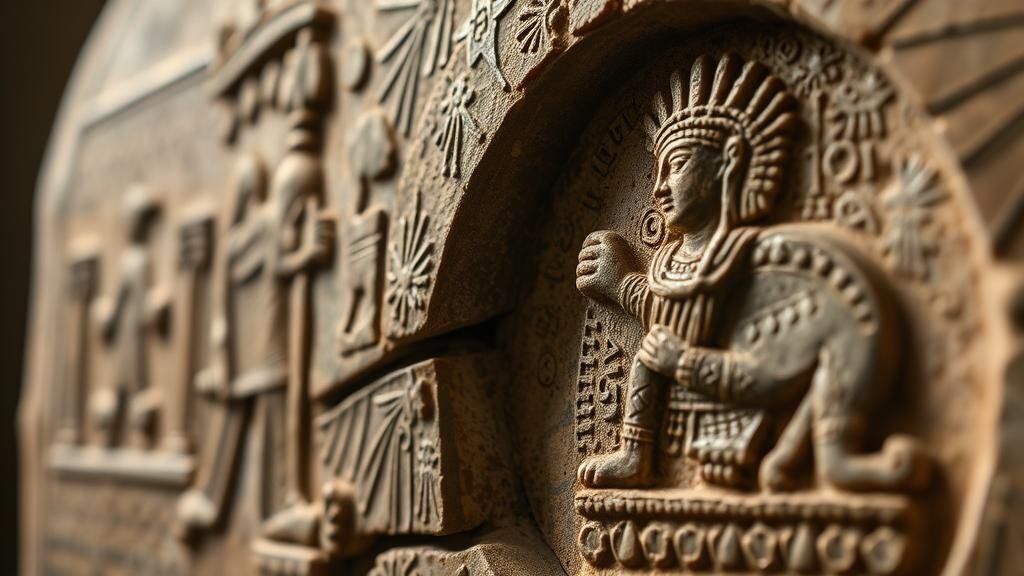How AI Can Decode Historical Iconography for Clues to Sacred Artifacts
Introduction
Artificial Intelligence (AI) has profoundly transformed various fields, including archaeology and art history. Its ability to analyze, recognize, and interpret vast datasets positions it as a valuable tool in decoding historical iconography, particularly in the realm of sacred artifacts. In this article, we will explore how AI can enhance our understanding of sacred art by deciphering the symbols and motifs typically found in religious contexts.
The Significance of Sacred Artifacts
Sacred artifacts are crucial in understanding the cultural and spiritual contexts of various civilizations. often embody religious beliefs, social norms, and historical narratives. For example, the Pearl of Lao Tzu, which is traced back to the ancient Philippines, serves as a symbol of prosperity and spirituality. Recognizing and interpreting such artifacts is vital for historians and archaeologists alike.
Historical Context of Sacred Art
From ancient Egyptian tombs to medieval Christian relics, sacred artifacts have been integral in reflecting the values and beliefs of their time. Rosetta Stone, discovered in 1799, is emblematic of this. It features the same text in three scripts, allowing scholars to decode hieroglyphics and leading to a deeper understanding of Egyptian civilization.
AI Technologies in Decoding Iconography
AI technologies, particularly machine learning and computer vision, are increasingly being applied to decode complex iconographic patterns. By training algorithms on extensive databases of images and symbols, researchers can discern and classify elements that might be too intricate or subtle for traditional analysis.
Machine Learning Applications
Machine learning techniques, particularly convolutional neural networks (CNNs), have been employed to classify and identify sacred motifs. For example, researchers at Stanford University utilized CNNs to analyze medieval manuscripts, successfully identifying over 5,000 distinct symbols used across various texts.
Computer Vision Techniques
Computer vision plays a crucial role in examining high-resolution images of artifacts. Techniques such as image segmentation allow AI to isolate features within an image, facilitating detailed analysis of motifs and patterns. The Automated Analysis of Painted Faces project uses this technology to investigate the stylistic elements of medieval icons, yielding new insights into their production and purpose.
Case Studies and Real-World Applications
Several case studies illustrate the potential of AI in decoding historical iconography related to sacred artifacts, expanding our knowledge in this domain.
Case Study 1: The Digital Atlas of Roman Art
The Digital Atlas of Roman Art integrates AI technologies to categorize and interpret visual data related to ancient Roman artifacts. By employing AI algorithms, researchers successfully identified over 10,000 iconographic elements, enhancing the understanding of Roman religious practices.
Case Study 2: Decoding Mayan Glyphs
In a groundbreaking study, a team at the University of California, Los Angeles, harnessed machine learning to decipher Mayan glyphs found on ceremonial artifacts. Using a vast dataset of known glyphs, the AI model achieved a recognition accuracy of 85%, facilitating new translations and interpretations of Mayan texts and their associated iconography.
Challenges and Limitations
Despite the advancements in using AI for iconographic analysis, challenges remain. AIs reliance on large datasets can lead to biased outcomes if the dataset lacks diversity or contains inaccuracies. Also, the subtlety of cultural symbols may be lost on AI systems that do not contextualize these elements within their historical frameworks.
Ethical Considerations
Ethical considerations must also guide the application of AI in sacred contexts. Decoding sacred symbols can impact cultural heritage and community sentiment; therefore, it is vital to approach these analyses with cultural sensitivity and ethical guidelines.
Conclusion
The integration of AI in decoding historical iconography presents unprecedented opportunities for understanding sacred artifacts. By enhancing traditional methodologies, AI can reveal hidden narratives and connections among historical cultures. While challenges exist, the advancement of AI technologies continues to offer actionable frameworks for researchers to explore, ultimately enriching our collective knowledge of humanitys diverse spiritual legacy.



